Results

Shrub with succulent brown branches and leaves crowded in clusters towards the tips of the stems. Dense groups of red-purple flowers; fruits are reddish or brown capsules. Native to Tenerife, restricted to the southern and western slopes ...
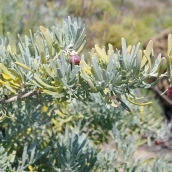
Densely branched, woody shrub, up to 1.5 m, evergreen, branches firm, yet flexible. Leaves are greyish-green, linear-lanceolate and up to 6 cm long. Flowers are yellow and borne in axillary clusters on the leaves; fruits are practically ...
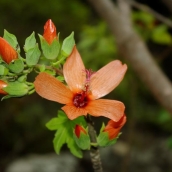
Very branched and well developed, up to 3.5 m. Leaves are palmately lobed. Flowers are orangey or salmon pink and clustered at the tip—similar to hibiscus flowers. The flowers appear before or just when the leaves are beginning to ...
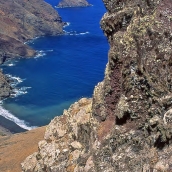
Porto Santo (42.2 km2) is located 39 km northeast of Madeira. The landscape of flatlands, mountains and isolated peaks, gently sloping ridges, sandy beaches and dunes shares similar geomorphological features with the easternmost Canary ...
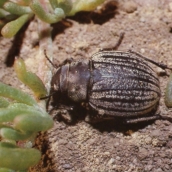
Large beetle (17-23 mm), endemic to Lanzarote, Fuerteventura and islets, associated with the arid and semi-desert environments of the eastern Canary Islands. The oval body is black, with scales or hairs on the wing covers, giving it an ...
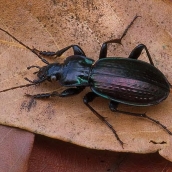
Endemic to Tenerife and found in the oldest parts of the island, where laurisilva laurel forests are preserved in near optimal ecological conditions. The subspecies C. faustus inhabits Anaga massif, Agua García (Tacoronte) and the ...
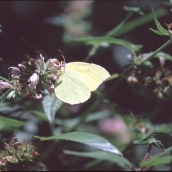
This butterfly is endemic to Tenerife and Gran Canaria and is found in laurisilva laurel and fayal-brezal firetree and heath forests, and potential areas of this woodland, as well as among thermophile vegetation and damp pine forests. ...
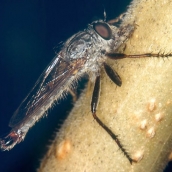
Endemic to La Gomera and a member of a genus (Promachus) that is very interesting from an evolutionary perspective because it has diversified into five species exclusive to the Canaries. This large fly (25-25 mm) has a long robust body, ...
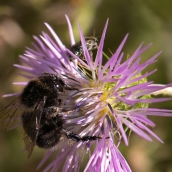
Endemic to the Canary Islands and found throughout, except in Lanzarote and Fuerteventura. Along with the honey bee (Apis mellifera), Bombus canariensis is a representative in the Canaries of the family Apidae, distinguished by its ...
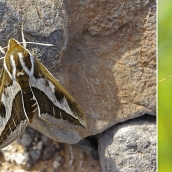
Nocturnal moth with a large wingspan (54-70 mm) and one of the commonest species in the islands, it thrives in areas where Euphorbia communities grow, from sea level to montane regions. The female lays 8-10 greenish eggs, each producing ...
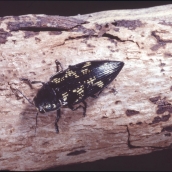
A Canary Island endemic closely associated with pinewoods and therefore not present on the eastern islands. Adults are relatively abundant and common in summer, while the wood-boring larvae live inside the branches and dead trunks of the ...
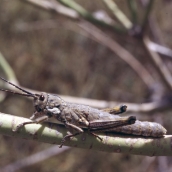
Originally from Africa, this grasshopper is endemic to La Palma. It is wingless and exhibits marked dimorphism in size: females measure 67-71 mm and males 31 mm. A plant-eater, it feeds exclusively on the succulent tabaiba (Euphorbia ...
















